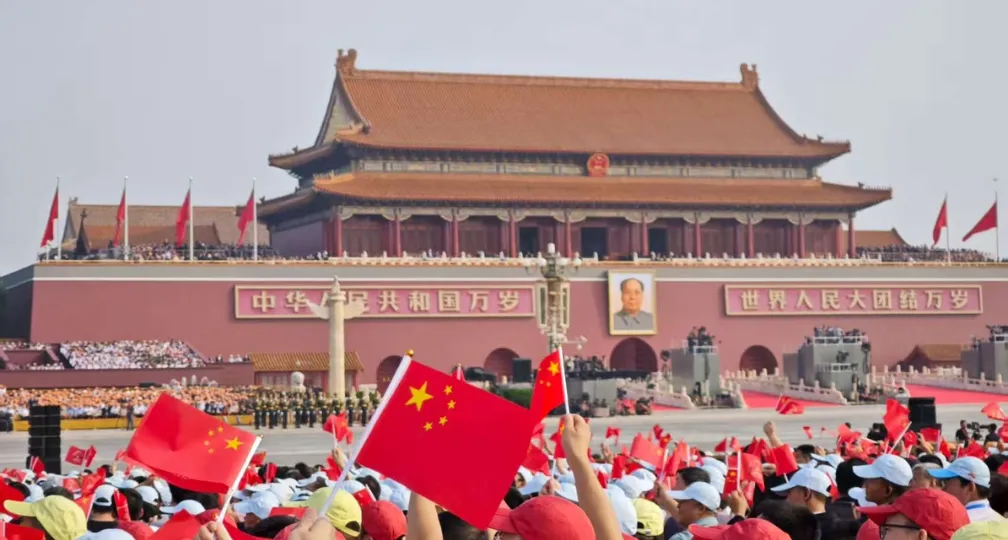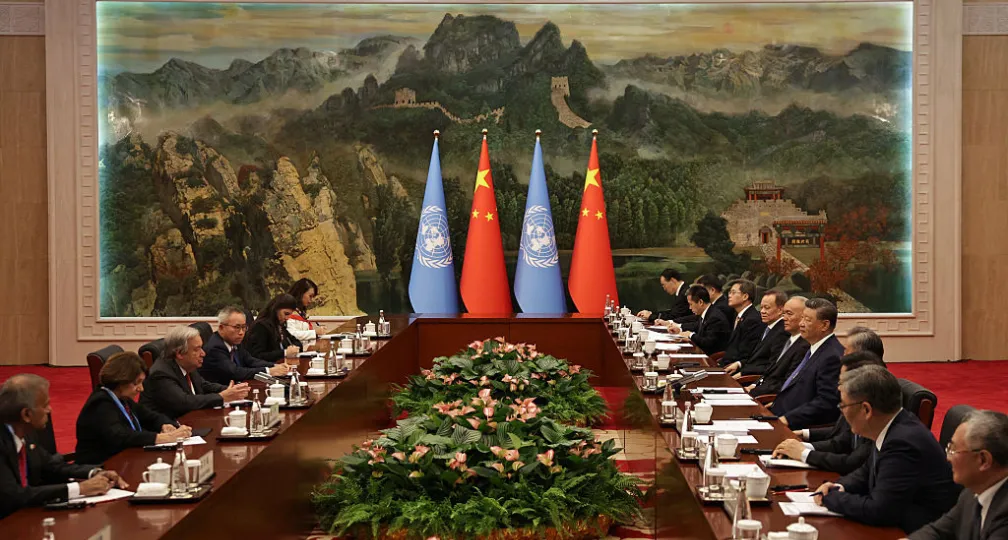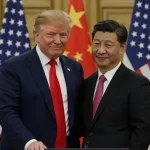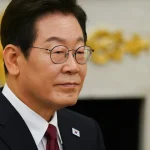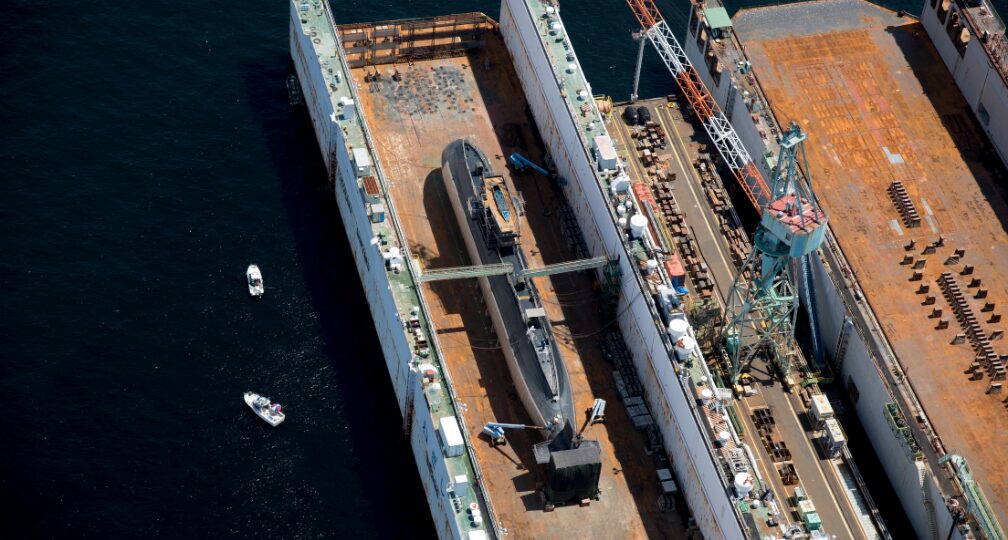Air superiority vs. air denial: Redefining U.S. airpower strategy
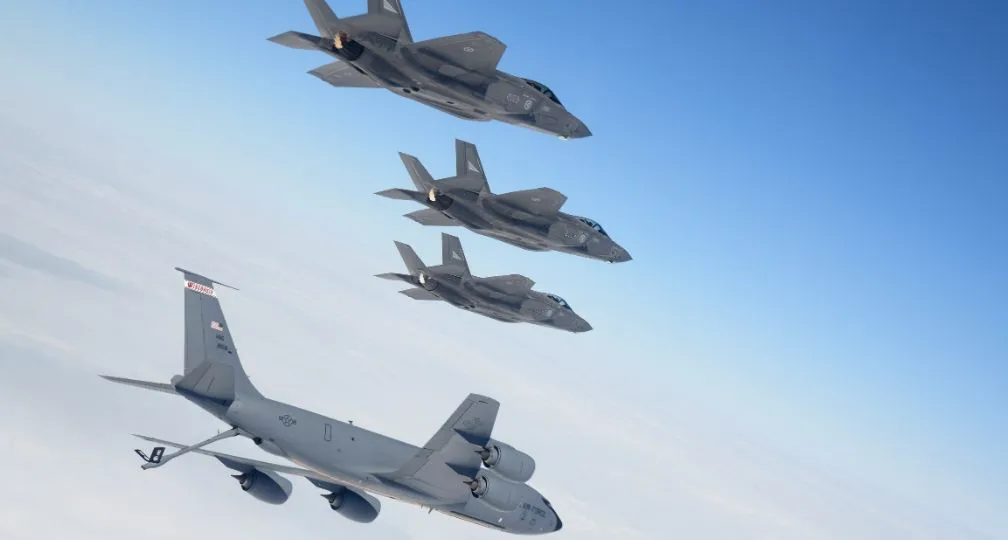
[Author: Sadamasa Oue , consulting senior fellow of the Asia Pacific Initiative / former lieutenant general in Japan’s Air Self-Defense Force]
"Manned fighter jets are obsolete in the era of drones," Elon Musk, the world's richest man and until recently head of the U.S. Department of Government Efficiency, posted on his social-media platform X last November. He even shared a video showing small drones flying in formation, captioned: “Meanwhile, some idiots are still building manned fighter jets like the F-35,” a plane whose cost-effectiveness he also criticized.
The Russia-Ukraine war offers compelling evidence for Musk’s views. Russia had lost more than 400 manned aircraft, including its latest Su-35 fighters and A-50 airborne early warning and control aircraft. And just last month, Ukraine successfully targeted Russia's long-range bomber fleet by surprise drone attacks, destroying around 40 planes, according to some estimates, and causing damage in the billions. In the nearly three and half years since the invasion began on Feb. 24, 2022, Russia has never gained air superiority. Drones and missiles have largely replaced fighter jets in combat operations. And despite its airpower disadvantage, the Ukrainian military has used air defense systems, man-portable anti-aircraft missiles and other weapons to good effect, forcing a stalemate on the ground.
The events in Ukraine have ignited a fierce debate among U.S. Air Force strategists, dividing them into the "air superiority" camp and the "air denial" camp. With budget constraints and quality issues plaguing the Air Force and a potential Taiwan contingency looming, how will the U.S. counter China's increasingly capable military?
The strategic debate is centering on whether to prioritize offensive or defensive airpower. The decision will determine how resources are allocated and affect the division of roles between the "shield" and "spear" in the U.S.-Japan alliance.
Air superiority and victory
David Deptula, a retired U.S. Air Force lieutenant general and leading advocate of air-superiority doctrine, highlights two key lessons from the Russia-Ukraine war: Russia’s failure to secure air superiority early on cost it a decisive victory and not doing so left the country vulnerable to attack. These lessons have not been lost on Japan’s Air Self-Defense Force.
Following 9/11, counterinsurgency became the U.S. Air Force’s primary mission during the Iraq and Afghanistan wars against adversaries lacking meaningful airpower. Annual Air Force Posture Statements repeatedly expressed concerns over operational strain from prolonged counterterrorism efforts, declining readiness, modernization delays and force downsizing due to budget constraints. However, preparations for countering China remained secondary.
The 2017 National Security Strategy and 2018 National Defense Strategy under the first Trump administration marked a major shift. Subsequent Air Force posture reports prioritized investments in four key areas to prepare for high-end warfare against China through the concept of Joint All-Domain Command and Control: integrating joint forces into networked systems, securing dominance in space, enabling rapid force generation and strengthening logistics to sustain operations while under enemy attack.
Frank Kendall, who became secretary of the U.S. Air Force in July 2021, outlined key priorities for maintaining conventional military superiority over China. These included enhancing space-based capabilities, accelerating the Next-Generation Air Dominance program, improving mobile threat targeting, advancing the B-21 bomber’s long-range strike capabilities, reinforcing the resilience of air bases and logistical networks and ensuring the Air Force can rapidly transition to wartime operations when necessary.
Meanwhile, Gen. Charles Brown, the former chairman of the U.S. Joint Chiefs of Staff, championed the strategic mantra “Accelerate Change or Lose,” urging rapid transformation to address emerging threats. These reforms were driven by an urgent need to counter China’s advancing Anti-Access/Area Denial (A2/AD) capabilities, which have positioned the Chinese military as a near-peer or superior adversary. The fundamental question remains: how can the Air Force secure air superiority in conflict with China?
The air-denial strategy
Air-denial strategy advocates Maximilian Bremer and Kelly Grieco challenge the traditional belief that “offense is the best defense” and that airpower is inherently offensive. Instead, they argue defense is fundamentally stronger in aerial warfare, with technology and tactical advancements further reinforcing the defending side’s advantage. A scenario where neither side gains air superiority would deter potential Chinese invasion of Taiwan.
Any conflict with China must account for the risk of nuclear escalation. Achieving air superiority would require neutralizing China’s sea-based air defense systems and mainland air bases. Such large-scale air offensives would significantly increase the likelihood of nuclear war, making them strategically flawed.
China’s A2/AD network is robust and breaking through would be extremely difficult and costly. If China launched a full-scale amphibious invasion across the Taiwan Strait, securing air superiority would be a prerequisite for success. By deploying multilayered, sophisticated air defense systems, the burden of achieving air superiority would shift to China, reducing nuclear escalation risk.
If China understands its air superiority efforts could be effectively countered by advanced missile and air defense systems, a denial deterrence strategy could succeed. This would render China’s military plans unfeasible, forcing it to abandon its objectives. For this to work, the U.S. Air Force should establish air denial as its core mission and take direct responsibility for air defense operations — currently handled by the U.S. Army through Patriot and THAAD missile systems. This contrasts with Japan’s Air Self-Defense Force, which plays a direct air defense role.
Matt Pottinger, former deputy national security adviser in the first Trump administration, expands this concept in his book, “The Boiling Moat.” He advocates turning the Taiwan Strait into a deadly zone for China’s naval forces to prevent large-scale amphibious invasion. While the book doesn’t explicitly address air denial, its core principle aligns with the strategy. If China is denied air superiority, it would reinforce efforts to block invasion from the sea, creating two-layered deterrence.
Optimal resource allocation
Carl von Clausewitz famously stated that “the first, the most far-reaching and the most comprehensive judgment a statesman and commander must make is to determine the kind of war upon which they are embarking.” This raises a fundamental question for the United States: What is the purpose, method and path to victory in a potential war against China? Currently, a clear operational strategy — a formula for victory — has yet to be established.
The defensive posture built around an air-denial strategy could serve as one solution to both winning a conflict with China and deterring one from occurring. The U.S. Indo-Pacific Command has invested in strengthening Guam’s missile defense system, while the Air Force has focused on expanding forward operating bases and enhancing resilience under the concept of Agile Combat Employment. These investments aim to deny China the ability to launch a successful invasion. Alongside Japan, Taiwan and the Philippines in the first island chain, strengthening this denial posture through joint air and missile defense integration and agile airpower deployment presents a viable strategic option.
Simultaneously, air superiority remains necessary for victory, as demonstrated by Israeli Air Force attacks against Iran followed by U.S. bombing. The challenge is determining how to establish control over contested airspace at critical moments by optimizing available capabilities, including drones and other emerging technologies. As Musk has pointed out, cost-effectiveness is key in resource allocation. Advanced fighter-jet prices have soared, making it essential to incorporate more affordable, expendable systems such as drones. However, weapon system effectiveness must be measured within a well-defined operational strategy context.
As he prepared to leave office, Secretary Kendall placed the service’s largest development initiative — the Next-Generation Air Dominance program — on hold, leaving continuation decisions to the incoming Trump administration. Trump determined to resume the program by naming it F-47. Yet, the formulation of new U.S. strategies toward China and the overall Air Force structure will depend on striking the right balance between air superiority and air denial — between offense and defense.
Synergies in U.S.-Japan alliance
At the first U.S.-Japan summit under the Ishiba and Trump administrations, both sides reaffirmed commitment to strengthening alliance deterrence and response capabilities. This included enhancing command-and-control frameworks between the Self-Defense Forces and the U.S. military, as well as increasing the presence of both forces in the southwestern islands. While no official demand was made for Japan to raise defense spending beyond 3% of gross domestic product, reinforcing joint operational posture remains a top priority for the second Trump administration.
To maximize deterrence against China, the traditional alliance division of roles — the U.S. as the “spear” and Japan as the “shield” — should evolve into more strategically integrated approaches, aligning air-superiority and air-denial concepts between the SDF and U.S. forces. Rather than being constrained by each administration’s politics, both countries must continue deepening pragmatic strategic discussions and advancing concrete measures to strengthen their joint operational posture.
(Photo Credit: US Air Force)
[Note] This article was posted to the Japan Times on July 9, 2025:
https://www.japantimes.co.jp/commentary/2025/07/09/world/air-superiority-vs-air-denial/
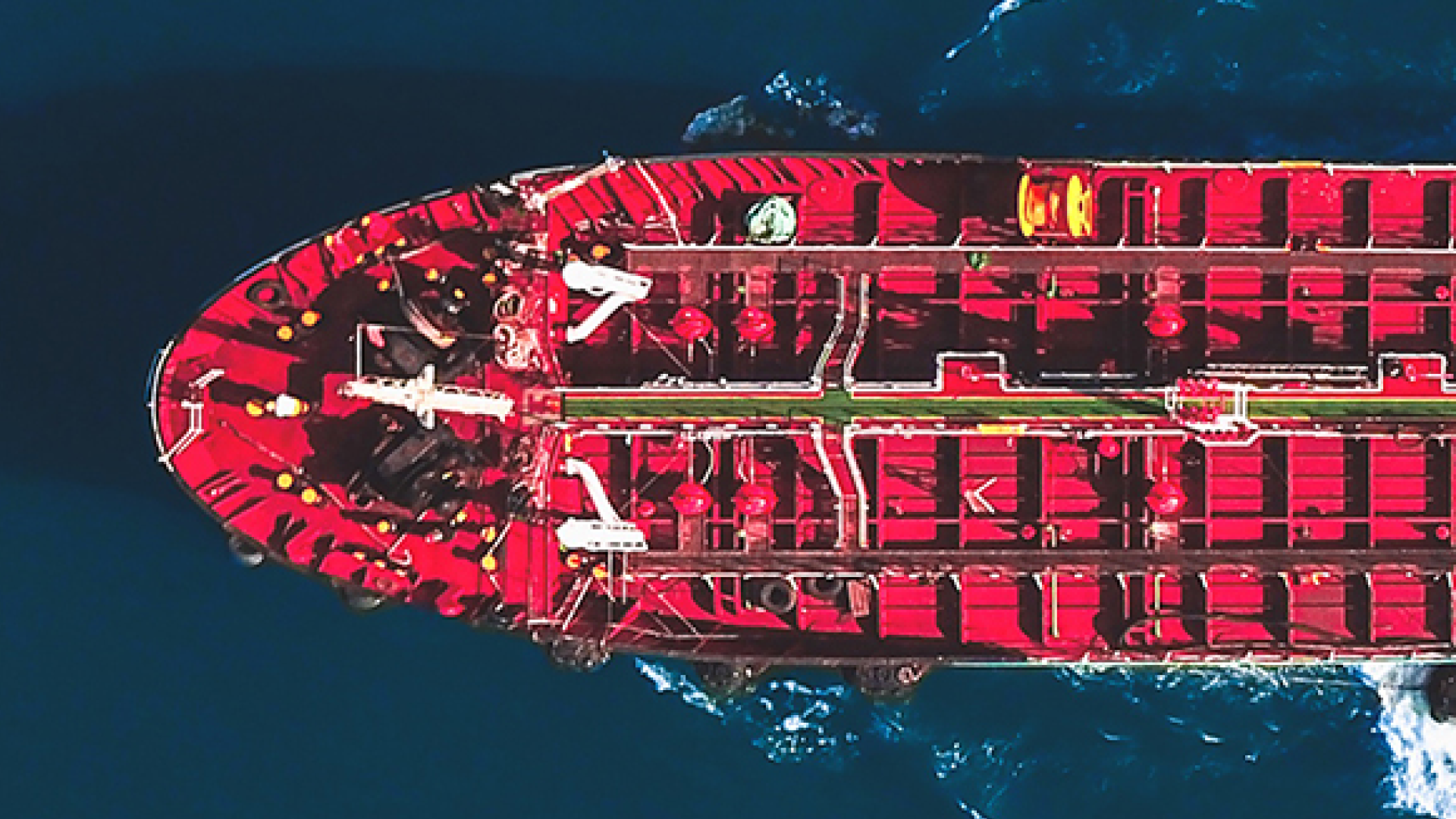
Geoeconomic Briefing
Geoeconomic Briefing is a series featuring researchers at the IOG focused on Japan’s challenges in that field. It also provides analyses of the state of the world and trade risks, as well as technological and industrial structures (Editor-in-chief: Dr. Kazuto Suzuki, Director, Institute of Geoeconomics (IOG); Professor, The University of Tokyo).
Disclaimer: The opinions expressed in Geoeconomic Briefing do not necessarily reflect those of the International House of Japan, Asia Pacific Initiative (API), the Institute of Geoeconomics (IOG) or any other organizations to which the author belongs.
-
 Is China Guardian of the ‘Postwar International Order’?2025.12.17
Is China Guardian of the ‘Postwar International Order’?2025.12.17 -
 Japan-India Defense in a Fragmenting Indo-Pacific2025.12.10
Japan-India Defense in a Fragmenting Indo-Pacific2025.12.10 -
 The “Economic Security is National Security” Strategy2025.12.09
The “Economic Security is National Security” Strategy2025.12.09 -
 India - Japan: The Glimpse of a Shared Vision2025.12.05
India - Japan: The Glimpse of a Shared Vision2025.12.05 -
 Beijing’s ‘Globalist’ Agenda Under Trump 2.02025.12.01
Beijing’s ‘Globalist’ Agenda Under Trump 2.02025.12.01
 Event Report: The Trump Tariffs and Their Impact on the Japanese Economy2025.11.25
Event Report: The Trump Tariffs and Their Impact on the Japanese Economy2025.11.25 The Real Significance of Trump’s Asia Trip2025.11.14
The Real Significance of Trump’s Asia Trip2025.11.14 The “Economic Security is National Security” Strategy2025.12.09
The “Economic Security is National Security” Strategy2025.12.09 The long road to a South Korea-U.S. trade deal2025.11.26
The long road to a South Korea-U.S. trade deal2025.11.26 Trump’s Tariffs Might Be Here to Stay – No Matter Who’s in Power2025.11.28
Trump’s Tariffs Might Be Here to Stay – No Matter Who’s in Power2025.11.28


